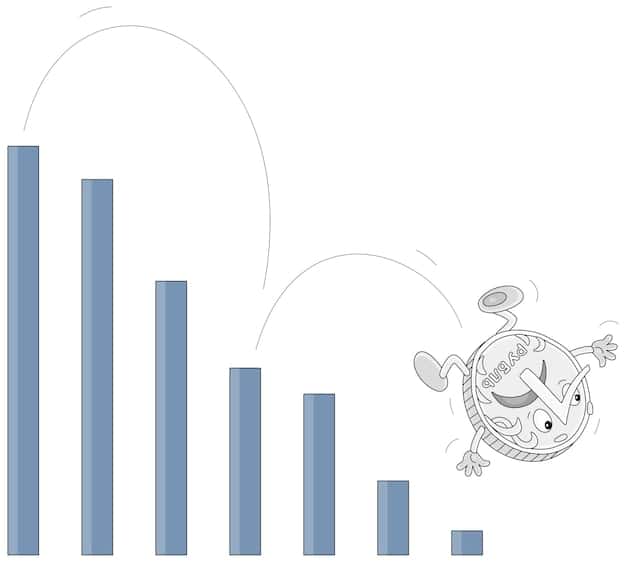Understanding the Latest Social Security Changes for 2025

Understanding the Latest Changes to Social Security Benefits: What to Expect in 2025 involves navigating adjustments to cost-of-living increases, taxable income thresholds, and benefit calculations, impacting retirement planning and financial security for current and future recipients in the United States.
Navigating the complexities of Social Security can feel like a daunting task, especially with ongoing adjustments. In this guide, we’ll break down Understanding the Latest Changes to Social Security Benefits: What to Expect in 2025, ensuring you are well-prepared for the future. Let’s explore these updates together.
Key Changes to Social Security Benefits in 2025
Social Security benefits are not static; they evolve annually to reflect changes in the economy and cost of living. Understanding these changes is crucial for anyone planning for retirement or currently receiving benefits. So, the question remains: what shifts are on the horizon for 2025?
Several factors influence adjustments to Social Security, including the Consumer Price Index (CPI), which measures inflation. This measurement is a primary driver of the annual Cost-of-Living Adjustment (COLA). Let’s delve into how these key modifications are anticipated to shape your financial future.
Cost-of-Living Adjustment (COLA)
The Cost-of-Living Adjustment (COLA) is designed to protect the purchasing power of Social Security benefits by ensuring they keep pace with inflation. Each year, the Social Security Administration (SSA) reviews CPI data to determine the COLA for the upcoming year. Keep an eye on news from the Bureau of Labor Statistics (BLS) to learn more about inflation metrics.
Impact of Inflation
Inflation plays a pivotal role in determining the COLA. When inflation rises, the COLA increases to help beneficiaries maintain their living standards. Conversely, if inflation remains low or decreases, the COLA may be smaller or even non-existent. The goal is to ensure that Social Security benefits don’t erode over time due to the rising costs of goods and services.

Here are some key factors related to the COLA update:
- COLA is typically announced in October and goes into effect in January.
- The calculation is based on the CPI data from the third quarter of the year.
- Higher inflation leads to a higher COLA, benefiting recipients.
Understanding the COLA and its dependence on inflation data is essential for anticipating changes to Social Security benefits. Staying informed about economic trends and announcements from the SSA can help you plan effectively for your financial future. This knowledge empowers beneficiaries to adapt to changing economic conditions.
Changes in Taxable Income Thresholds
The amount of earnings subject to Social Security taxes changes annually, based on national average wage index data. This adjustment affects both workers and employers, as it determines the maximum earnings that are subject to Social Security tax. What adjustments can we anticipate for the upcoming year?
These adjustments are important for several reasons. They ensure that Social Security remains financially stable and able to provide benefits to current and future retirees. Higher taxable income thresholds mean more revenue for the Social Security Trust Funds, which help to stabilize the system.
Understanding the Threshold
The taxable income threshold sets the limit on how much of your income is subject to Social Security taxes. Earnings above this threshold are not taxed for Social Security, nor are they used in calculating your future benefits. It’s a critical component of Social Security funding.
Impact on High Earners
For high-income earners, changes to the taxable income threshold can have a noticeable impact. An increase means that a larger portion of their income becomes subject to Social Security taxes. This can affect their take-home pay, but it also contributes to the long-term solvency of the Social Security system.
Important points about taxable income thresholds:
- The threshold is typically adjusted annually based on wage growth.
- Increases in the threshold mean more earnings are subject to Social Security tax.
- These changes affect both employees and self-employed individuals.
Updates to Benefit Calculation Formulas
Social Security benefits are calculated using a complex formula that takes into account your earnings history. This calculation determines your Primary Insurance Amount (PIA), which is the benefit you receive at your full retirement age. It’s important to understand how these formulas change, as they directly affect the size of your retirement benefits.
Several factors can influence the benefit calculation formula, including changes to the average wage index and adjustments to the bend points used in the PIA calculation. These adjustments ensure that benefits reflect current economic conditions and wage levels. How exactly do these formulas shift?
Primary Insurance Amount (PIA)
The Primary Insurance Amount (PIA) is the foundation of your Social Security benefits. It’s calculated based on your Average Indexed Monthly Earnings (AIME) and adjusted by bend points. Understanding how the PIA is determined is essential for estimating your future benefits.
Bend Points and Their Significance
Bend points are specific income levels used in the PIA formula. They determine the percentages applied to different portions of your AIME to calculate your benefit amount. Changes to these bend points can impact the overall benefit calculation. They are designed to provide a progressive benefit structure, ensuring lower-income earners receive a higher percentage of their earnings in benefits.
Understanding these formulas is crucial for gauging your likely benefits:
- PIA is calculated using AIME and bend points.
- Bend points are adjusted to reflect changes in wage levels.
- Changes in the formula can affect the size of your retirement benefits.
Strategies for Maximizing Your Social Security Benefits
There are several strategies you can use to maximize your Social Security benefits. Understanding these strategies and planning accordingly can significantly increase your retirement income. What are some effective approaches you can take?
Delaying your retirement, coordinating with your spouse, and understanding the impact of working while receiving benefits are all important considerations. These strategies can help you optimize your Social Security benefits for a more secure retirement.
Delaying Retirement
Delaying your retirement can significantly increase your Social Security benefits. For each year you delay past your full retirement age (up to age 70), your benefits will increase by a certain percentage. This can result in a substantial boost to your monthly income.
Spousal Benefits and Coordination
Spousal benefits allow eligible individuals to receive benefits based on their spouse’s earnings record. Coordinating with your spouse and understanding how spousal benefits work can help maximize your household’s total Social Security income. Planning together is essential!

Strategic planning is vital for making the most of Social Security:
- Delaying retirement increases your monthly benefits.
- Spousal benefits can provide additional income based on your spouse’s earnings.
- Working while receiving benefits can affect your payments.
Impact on Different Age Groups and Beneficiaries
Changes to Social Security benefits can affect different age groups and beneficiaries in various ways. Understanding how these changes will impact you personally is essential for effective retirement planning. How do adjustments affect younger versus older individuals?
Whether you are nearing retirement, already receiving benefits, or just starting your career, it’s important to understand how these changes will influence your long-term financial security. Each group faces unique considerations and challenges when it comes to Social Security.
Younger Workers
Younger workers have the longest time horizon to adjust to changes in Social Security benefits. Understanding how these changes will affect their future benefits is crucial for long-term financial planning. They need to save and invest wisely to supplement their future Social Security income.
Current Retirees
Current retirees rely heavily on Social Security benefits. Adjustments to COLA and other factors directly impact their monthly income and financial stability. Staying informed about these changes ensures they can manage their expenses effectively and maintain their living standards.
Different groups face unique Social Security factors:
- Younger workers should plan for future changes and save accordingly.
- Current retirees need to stay informed about COLA adjustments.
- Those nearing retirement should understand how benefit calculation formulas work.
Resources for Staying Informed About Social Security
Staying informed about Social Security benefits requires access to reliable resources and tools. Utilizing these resources can help you stay up-to-date on the latest changes and plan effectively for your retirement. What tools and resources are available to you?
The Social Security Administration (SSA) website, financial advisors, and retirement planning tools are valuable sources of information. These resources can help you navigate the complexities of Social Security and make informed decisions about your retirement planning.
Social Security Administration (SSA) Website
The Social Security Administration (SSA) website is a comprehensive resource for all things Social Security. It provides information on benefits, eligibility, application processes, and the latest news and updates. Utilizing this website is essential for staying informed.
Financial Advisors and Retirement Planners
Financial advisors and retirement planners can provide personalized guidance on Social Security and retirement planning. They can help you understand how changes to Social Security will impact your financial situation and develop strategies to maximize your benefits. Seeking professional advice can be invaluable
Here are key resources for staying informed about Social Security:
- The Social Security Administration (SSA) website provides comprehensive information.
- Financial advisors offer personalized guidance and planning.
- Retirement planning tools help estimate your future benefits.
In conclusion, understanding the Understanding the Latest Changes to Social Security Benefits: What to Expect in 2025 is crucial for anyone planning their retirement or currently receiving benefits. Staying informed about COLA adjustments, taxable income thresholds, and benefit calculation formulas can help you make sound financial decisions. By utilizing available resources and coordinating with financial professionals, you can navigate these changes effectively and ensure a more secure retirement.
| Key Point | Brief Description |
|---|---|
| 💰 COLA Adjustment | Annual increase to benefits based on inflation. |
| 💼 Taxable Income Threshold | Maximum earnings subject to Social Security tax. |
| 📈 Benefit Formulas | Calculations determining your Primary Insurance Amount (PIA). |
| 📅 Maximizing Benefits | Strategies like delaying retirement to increase income. |
Understanding Social Security Changes FAQ
▼
The Cost-of-Living Adjustment (COLA) increases your Social Security benefits to match inflation, helping you maintain your purchasing power. It is calculated annually based on the Consumer Price Index (CPI).
▼
The taxable income threshold is the maximum amount of your earnings subject to Social Security taxes. Earnings above this threshold are not taxed for Social Security purposes, ensuring stable funding.
▼
Social Security benefits are calculated using a formula that considers your average indexed monthly earnings (AIME) and applies bend points to determine your primary insurance amount (PIA). This ensures fair benefit distribution.
▼
Delaying retirement can substantially increase your monthly benefits. Coordinating with your spouse on spousal benefits and being mindful of working while receiving benefits improves your income.
▼
The Social Security Administration (SSA) website offers extensive resources, and financial advisors and retirement planners provide personalized guidance. Using these resources is imperative when staying informed and planning your future.
Conclusion
Staying abreast of the anticipated shifts to Social Security benefits in 2025 is paramount for comprehensive financial planning. By proactively understanding aspects like COLA, taxable income thresholds, and benefit calculation formulas, individuals can effectively navigate their retirement strategies. Utilizing available resources and seeking professional advice ensures informed decision-making, fostering financial security for the future.





